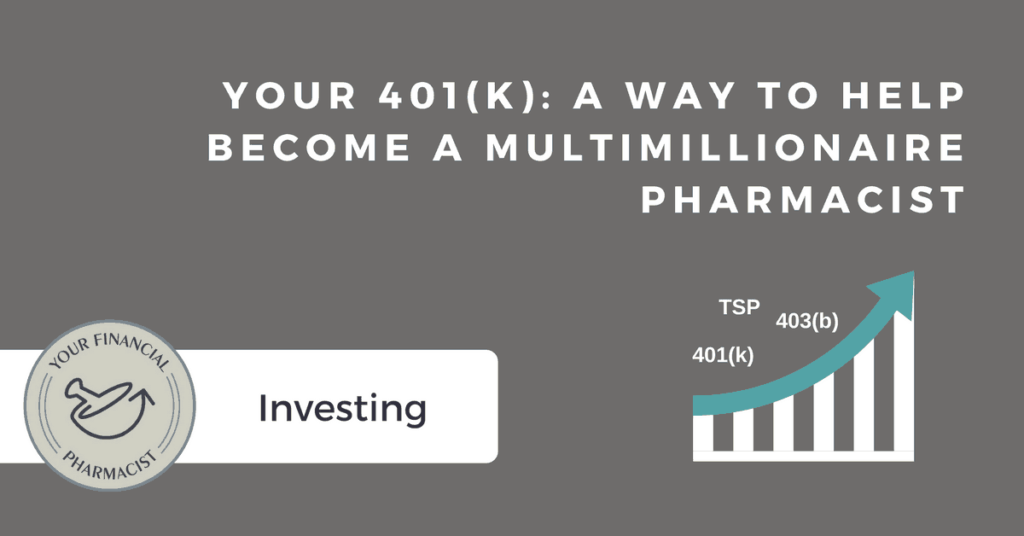The following post was written by Ben Michaels, Pharm.D. Ben is an assistant pharmacy manager for Kroger Columbus KMA. He received his Doctor of Pharmacy degree from University of Cincinnati’s James L Winkle College of Pharmacy and completed a community residency program with Fred Meyer/Oregon State. In addition to practicing as a pharmacist, Ben works with students at The Ohio State University to help orientate resettled refugees to using community pharmacies in the United States. He aspires to enable pharmacists and pharmacy students understand finances and achieve their financial goals. If you have any questions for Ben, please contact him at [email protected]
Does the thought of saving $3 million by the age of 65 make you uneasy? More importantly, how can you do it? Using the average pharmacist salary of approximately $117,000, let’s assume that a pharmacist graduates at age 25 and starts saving 10% of his/her average salary until 65. This pharmacist decides to put all the money under his/her mattress. Over the next 40 years this pharmacist would be sleeping on $466,680. While the pharmacist did a great job at saving, this leaves him/her over $2.5 million short of achieving our goal and sleeping on a very uncomfortable mattress!
So where are we going to get the extra millions from? A 401(k) (or 403(b) or 457(b) if you work for certain organizations) is one of your best tools for making up this difference. Throughout the rest of the article, I will use the terminology 401(k) to represent these employer-sponsored retirement plans. For many pharmacists, these terms may be something that you have heard of, but may not fully understand. After all, you graduated with a pharmacy degree, not a degree in finance! To summarize these types of accounts, they are a retirement savings account sponsored by your employer normally managed by an outside financial institution. Here is a link from Investopedia that provides more information.
There are three major advantages to using a 401(k) as a savings vehicle for retirement:
- Your contribution to a traditional 401(k) is tax deductible. What this means is that if you earn the average pharmacist salary of $116,670 and contribute 10% of your salary ($11,667 per year) to a 401(k), your taxable income for the year is now $105,003.
- The contributions (employee and employer match) to a traditional 401(k) grow tax-free. However, it is important to note this money will be taxed upon withdrawal. While we won’t spend time in this article discussing the Roth 401(k), it is important to note this option may be available to you in your employer offered retirement plan. In a Roth 401(k), you will pay income taxes on your contributions but your account will grow tax-free and you won’t have to pay any taxes on your withdrawals during retirement.
- Many employers will match a percentage of your 401(k) contributions. Let’s look at a potential scenario again using the assumptions from above.
If the mattress money stocking pharmacist from above put the same amount of money into a 401(k) account that didn’t make any interest at all in 40 years, but his/her employer matched 3% of the contribution, instead of amassing $466,680 over 40 years, he/she would have $606,684. That’s an extra $140,004 just from the employer that would be lost if he/she did not take advantage of the 401(k) plan!
Hopefully the above information will have convinced you to start contributing to your 401(k) plan if you aren’t already. So now that you are ready to contribute, where can you get more information on managing your account? Fortunately, there are some great websites that can provide you with tools to help you plan your retirement.
The website Investopedia, which I already reference above, is a page that provides definitions and general information related to investing. There are articles on managing a 401(k) and also some useful budgeting tools. This site is a good starting point to learn many of the basic terms and theories used in the financial world.
Once you get your retirement account up and running, you may see that you have some options with regards to how you wish to allocate the money that you are saving in the account. Futureadvisor is a free service that allows you to link your 401(k) through their website and then gives you investing advice based on an analysis of your account. The alternative to this would be meeting face to face with a financial planner, which is also a great option if you are unsure about how to invest your savings.
If you want to work out the numbers and see what adding a bit more money each month will do long term, you will want to use some financial calculators. Just like calculating vancomycin peaks and troughs, you can do this all by hand, but using a calculator makes it much easier. Bankrate and Smartasset both have calculators for almost every financial situation you can think of. Besides retirement calculators, these sites offer calculators for real estate, loans, relocation, and many other categories.
You probably already use the internet to read reviews of products or services that you are looking to purchase and financial services are no different. A helpful site that reviews investment accounts along with credit cards, bank savings and checking accounts, insurance, mortgages, etc. is Nerdwallet. If you are looking to open any type of financial account, this site is a great place to do some research first.
The last sites I want to mention are robo-advisor sites. The two major sites are Betterment and Wealthfront and you can find reviews of each on the previously mentioned Nerdwallet. If you find yourself in a position where you want to start a retirement account but your employer doesn’t offer a 401(k), these sites both provide a way to invest funds and then use computer algorithms to do the investing and trading for you.
Returning to the previous example of the mattress money-stocking pharmacist, let’s compare what his/her savings might have been if he/she invested for 40 years in an employer-sponsored traditional 401(k) where the employer matched 3% and the average annual rate of return was the 8% using this calculator from Bankrate. Under the same assumptions previously mentioned this pharmacist would have $4,097,413 saved in their retirement account at age 65. Even with a conservative average annual return of 4%, this pharmacist would still have 1,472,308 saved at age 65 or $865,624 more than his mattress-stuffing peer. I invite you to use the calculator and plug in your own financial numbers and see the difference that 401(k) contributions can have on your retirement savings.
Current Student Loan Refinance Offers
[wptb id="15454" not found ]Join the YFP Community!
Recent Posts
[pt_view id=”f651872qnv”]








